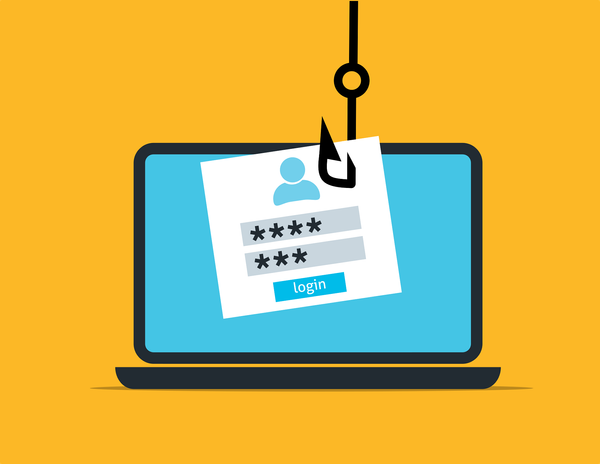AI Scams: How Cybercriminals Use AI to Defraud Digital Citizens and How to Stay Safe

Are you curious about AI and its uses? Well, you should be, because scammers have taken a keen interest in artificial intelligence tools that can enhance old scams or create shockingly credible and successful new ones.
AI-powered technology has become highly versatile, enabling cybercriminals and other digital miscreants to manipulate reality as we know it. Scams are getting harder to detect, and low-skill cybercrooks are getting a much-needed boost to conduct highly successful schemes that weren’t necessarily productive in the past.
How cybercriminals use AI advancements
Scammers and other threat actors use AI to carry out a variety of attacks or improve existing ruses:
- They create deepfake videos, audio recordings and photos to impersonate a trusted individual and defraud users
- AI can make phishing attacks harder to detect. Cybercriminals use AI to refine scam emails, which look more legitimate and convincing than previous iterations
- Conduct more sophisticated and powerful DDoS attacks
- Escalate ransomware attacks by using AI to identify individuals and organizations, and target them with personalized phishing schemes
- Enhance analysis of stolen databases to maximize data breaches
- Successfully crack passwords
Common AI-powered scams you need to know
The more aware you are of the AI-related scams circulating around the internet, the better you can protect yourself and your loved ones against risks and money loss.
Here are some of the most prevalent AI scams:
1. Voice cloning scams or audio deepfakes
In this type of scam, threat actors create convincing voice recordings of real people to manipulate others into handing out sensitive information or money. Scammers can collect voice samples from social media videos, public speeches, or phone calls to impersonate you, your family members, or public figures such as politicians, health professionals and celebrities. They use the cloned voice to manipulate you into transferring money, purchasing goods, paying ransom or giving out sensitive information such as passwords, PINs and Social Security Numbers.
2. Deepfake video scams.
Threat actors can also use artificial intelligence to create fake videos depicting celebrities and other well-known figures to defraud users on social media platforms. For example, scammers have conducted extensive crypto-doubling scams on YouTube by creating videos impersonating Michael Saylor and Elon Musk. Other campaigns involve cybercrooks spreading fake videos that promote celebrity-endorsed investment schemes and giveaways on Facebook and Instagram.
Deepfake videos are also used in misinformation campaigns or to mislead individuals into downloading malware onto their devices or purchasing phony products online.
Related: Stream-Jacking 2.0: Deep fakes power account takeovers on YouTube to maximize crypto-doubling scams
You can read more about deepfakes and how to spot them in this dedicated article: Deepfakes: what they are, how they work and how to protect against malicious usage in the digital age
3. Deepfake video call scams
As previously explained, fraudsters use AI technology to amplify existing schemes. They use deepfakes and face-swapping to carry out elaborate romance scams and steal millions from unwary victims. Scammers use face-swapping technology to change their appearance in real time and create new identities to lure individuals into a romantic relationship online.
And that’s not all. Cybercriminals managed to pull off an amazing heist after convincing a Hong Kong employee to transfer $25 million into five separate bank accounts belonging to the cybercriminals. How? They doctored publicly available videos and images of his colleagues and the company's chief financial officer and entered phony video call meetings with the employee.
Related: How to identify military romance scams. Are you a potential target?
4. AI-powered phishing scams
Using generative AI, cybercriminals can now conduct highly efficient and extensive phishing campaigns that lack the common telltale signs of a couple of years ago: typos, poor grammar, or other idiosyncrasies to sound like native speakers. Moreover, AI can deliver a more personalized or legitimate-looking message to the victim by creating a copy that sounds more professional. These changes let scammers automate mass spam campaigns, reply in real time and potentially gain access to more sensitive data than ever before.
5. Other AI scams on social media
AI can also be used to create fake social media profiles that look and behave like real people. These profiles can then be used to build trust with victims and trick them into sharing personally identifiable information and money. Scammers also use AI-generated images to make their profiles look like the real deal or use AI-generated websites to create phony online stores to steal your credit card info.
Related: AI meets next-gen info stealers in social media malvertising campaigns
How to protect against AI scams
Protecting against AI scams requires awareness, caution, and the proper tools.
Use Bitdefender Scamio, our AI-powered tool dedicated to helping you identify and avoid potential scams. When unsure about an email online proposal, text or request, you can check it with Scamio on WhatsApp, Facebook Messenger, or a web browser for free! Copy/ paste a text or link, describe the situation, and upload the image or the QR code you want to verify. Scamio will analyze the data and tell you if anyone is trying to scam you. You can also help others stay safe by sharing Scamio with them in France, Germany, Spain, Italy, Romania, Australia and the UK.
Here are our top recommendations to stay safe:
1. Be skeptical of unexpected communications: Scammers often pose as reputable companies or individuals. Always verify the source of the communication before sharing personal information or making any transactions.
2. Analyze the video content and quality of the voice on videos and recordings you see online. Use this dedicated article to learn more about how to spot deepfakes online.
3. Exercise caution if a family member, friend or colleague contacts you using an unfamiliar email, phone number, or social media profile. You can text or call the person using the usual contact methods instead. Remember, scammers will always attempt to play with your emotions and pressure you into making a decision on the spot.
4. If something sounds too good to be true, it is. Double-, or better yet triple-check any information before clicking on links or sharing personal info.
5. Use reliable and comprehensive security software to help detect and block phishing attempts and other scams. Handy features including Scam Alert and Email Protection available for Gmail and Outlook are available in all-in-one plans.
6. Keep software up to date. Keeping your operating system and applications up to date ensures you have the latest security patches.
7. Don’t overshare on social media. Make your profile private and avoid disclosing your travel plans to the public. This could allow scammers to impersonate you while abroad or on holiday and target your family members and friends. 5. Educate yourself: Stay informed about the latest scam techniques so you can recognize them.
8. Use unique passwords for all online accounts to help prevent unauthorized access to your accounts.
9. Report any suspicious or scam videos to the social media platforms and inform all of your loved ones to help them stay safe too.
10. Contact law enforcement and other relevant agencies if you’ve fallen victim to a scam.
tags
Author
Alina is a history buff passionate about cybersecurity and anything sci-fi, advocating Bitdefender technologies and solutions. She spends most of her time between her two feline friends and traveling.
View all postsRight now Top posts
How to Protect Your WhatsApp from Hackers and Scammers – 8 Key Settings and Best Practices
April 03, 2025
Outpacing Cyberthreats: Bitdefender Together with Scuderia Ferrari HP in 2025
March 12, 2025
Streamjacking Scams On YouTube Leverage CS2 Pro Player Championships to Defraud Gamers
February 20, 2025
How to Identify and Protect Yourself from Gaming Laptop Scams
February 11, 2025
FOLLOW US ON SOCIAL MEDIA
You might also like
Bookmarks







